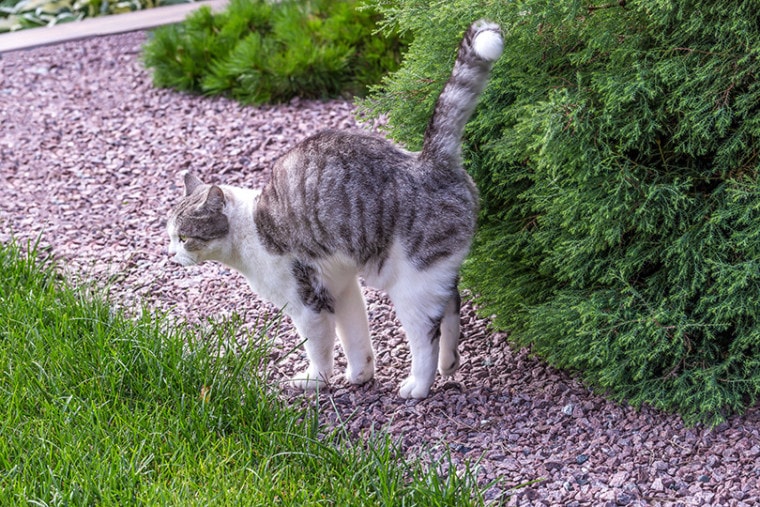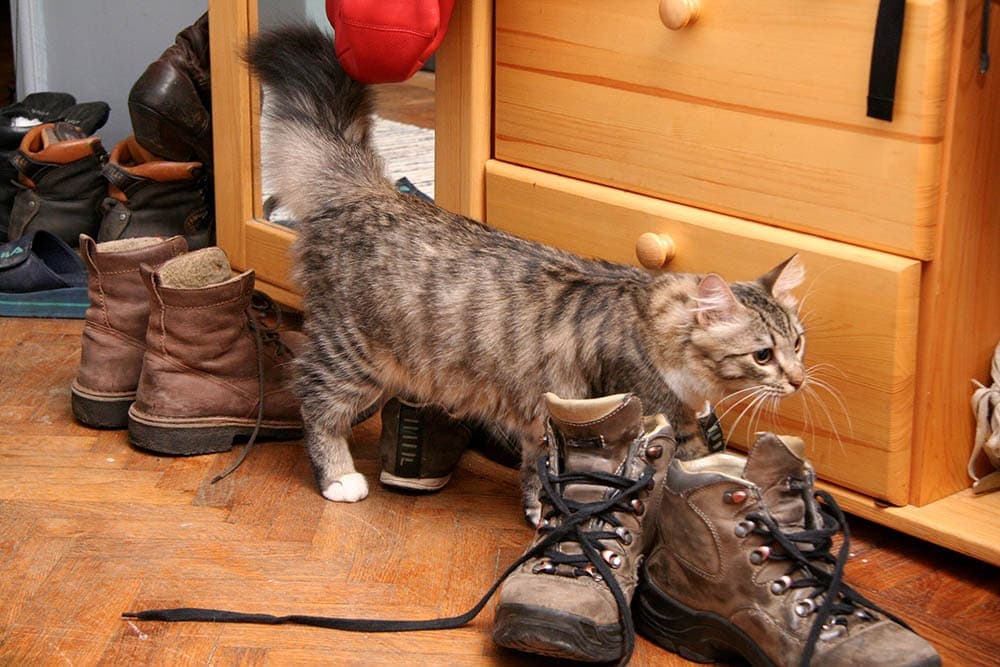
Cats are amazing, but sometimes their behavior isn’t. Whether it’s your cat scratching up the sofa or getting into something they shouldn’t, every once in a while, you have to question why they’re doing what they’re doing.
One of the more common questions pet owners have about their cats is why there’s suddenly pee in odd places outside the litter box. Is your cat marking their territory? Or are they annoyed you got the chicken-flavored food and not the fish?
Depending on where you’re finding urine outside the litter box, there’s a good chance your cat is marking their territory. There’s also a chance that they could be dealing with something else, causing them to eliminate inappropriately. Here’s how to tell the difference between territory marking and inappropriate elimination and minimize their occurrences.
Urine Marking vs Inappropriate Elimination
Domesticated cats may not live in the wild, but they certainly haven’t forgotten those wild instincts. Cats aren’t social animals—they don’t form packs—whether wild or domesticated. When in the wild, cats mark their territory to let other cats know they are there to reduce the risk of meeting other cats. One of the ways they mark their territory is via urine marking, which is believed to be one of the forms of communication cats use to avoid conflict with other cats. The same applies to domesticated cats. If you have a cat who is urine marking, they are letting other cats know that this is their territory (or to signal that they are open to mating). The other reason for urine marking is that a cat feels stressed or threatened by changes in the home (for example, if a new pet was brought in).
However, if you’re finding urine outside the litter box, there’s a chance your cat isn’t urine marking but is instead engaging in inappropriate elimination. This behavior occurs when your cat is either displeased with their litter box in some way, experiencing stress, or has something wrong with their health (i.e., urinary tract infections or kidney problems).
That leads to how you can tell the difference between the two behaviors.
How to Tell the Difference Between Urine Marking & Inappropriate Elimination
How to tell the difference between urine marking and inappropriate elimination comes down to a handful of things, including where you’re finding urine in the house and the kind of cat or household you have.
When it comes to urine marking, you’ll typically find the urine on vertical surfaces. Marking territory with pee involves spraying, when your cat backs up to a vertical surface, continues standing, raises its tail, then urinates. And with marking territory, there will normally be only a few drops of urine versus how much urine there would be if your cat were just going to the bathroom. The other sign of marking territory with pee? It will smell extremely strong, more so than it usually does since your cat is leaving a message.

Urine marking is also more likely to occur when you have one or more of the following:
In contrast, you’ll find with inappropriate elimination that your cat is not only urinating in places it shouldn’t but defecating as well. Inappropriate elimination will be done on a horizontal surface instead of vertical, as your cat will be going to the bathroom in the same way they always do. Plus, the amount of waste you find will be the same as what it would be if it were in the litter box, instead of simply a few drops. This behavior can occur when your cat dislikes their litter box, is stressed, or because there’s an underlying medical issue.
How To Minimize Urine Marking
If you discover that your cat is urine marking, your next question will likely be, “How do I get it to stop?” There are several things you can do to minimize—and even stop—your cat from marking territory with pee.

It may take a bit of time for your cat to stop marking their territory with urine but adopting any of these steps should help. One thing to note is to never rub your cat’s nose in their mess or clean it up with a cleaner containing ammonia (as this may entice your kitty to mark the same spot again).
No matter how hard you try, pets will always leave you cleaning up smells, stains, vomit, hair, and everything in between. With the Hepper Advanced Bio-Enzyme Pet Stain & Odor Eliminator Spray, you can advance your clean-up routine!
- ADVANCED ENZYMATIC CLEANER - Penetrates the most stubborn smells and stains at the deepest molecular...
- FOR ANY MESS, ON ANY SURFACE - This pet odor eliminator cleans your carpets, floors, furniture,...
- FRESH, NATURAL ODOR - Our unique formulation doesn't rely on dangerous or unpleasant chemical...
It permanently removes the very worst pet stains and smells (and truly makes clean-up a breeze). Click here to learn more, order a bottle, and freshen up your home today.
At Pet Keen, we’ve admired Hepper for many years, and decided to take a controlling ownership interest so that we could benefit from the outstanding products of this cool cat company!
- Related Read: Where Do Cats Pee From? Exploring Your Cat’s Anatomy
Final Thoughts
Cats absolutely do mark their territory with pee, and unfortunately, it can be quite annoying for you. There are several reasons your cat could feel inclined to mark its territory, such as to ward off other cats or because something has changed, and it’s stressed. Luckily, there are a few ways you can reduce the instance of urine marking. Before doing anything, though, you’ll need to figure out if what your pet is doing is indeed marking territory or is instead inappropriate elimination, as simply not using the litter box is something else entirely.
Featured Image Credit: Helen Liam, Shutterstock








